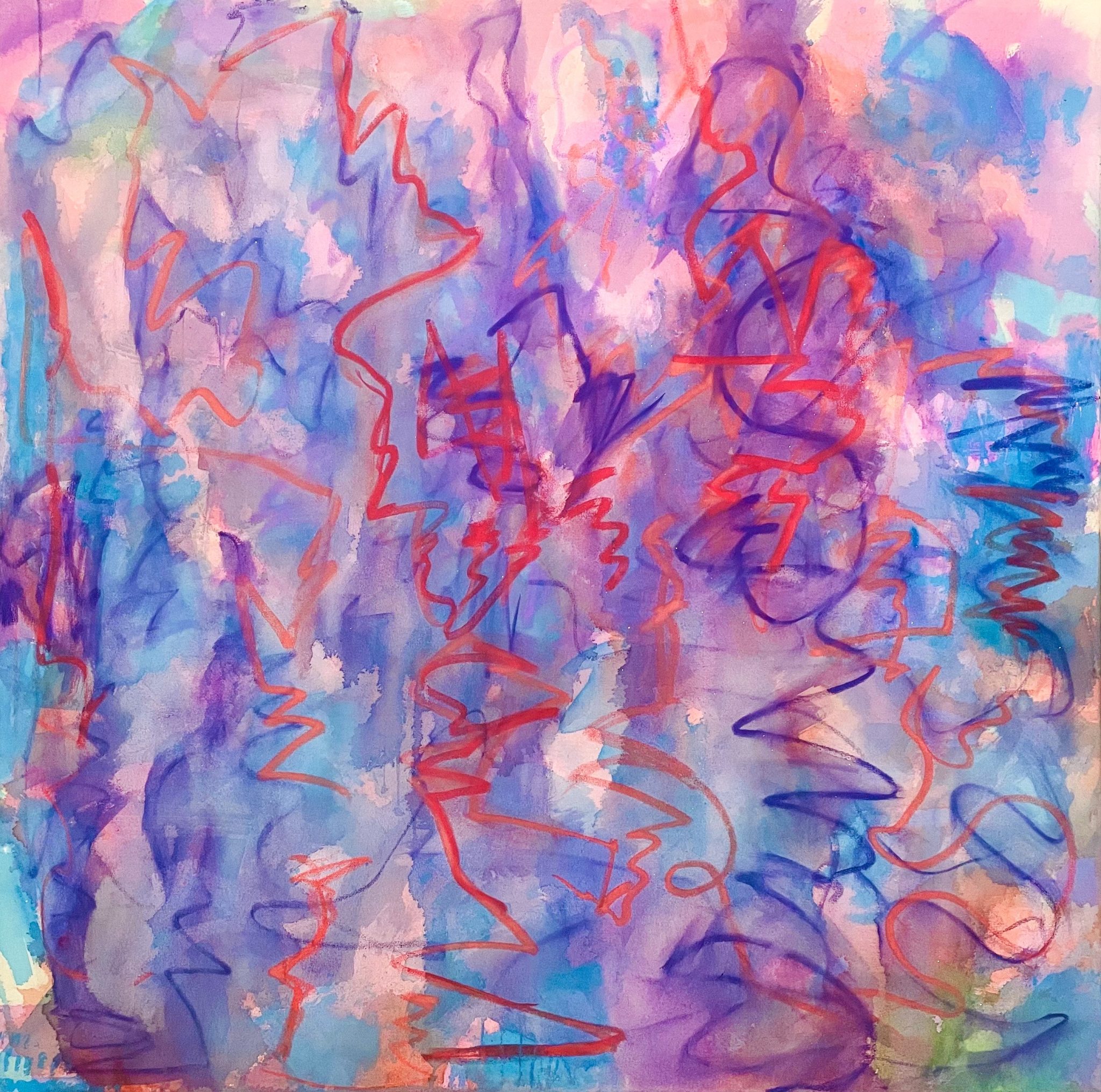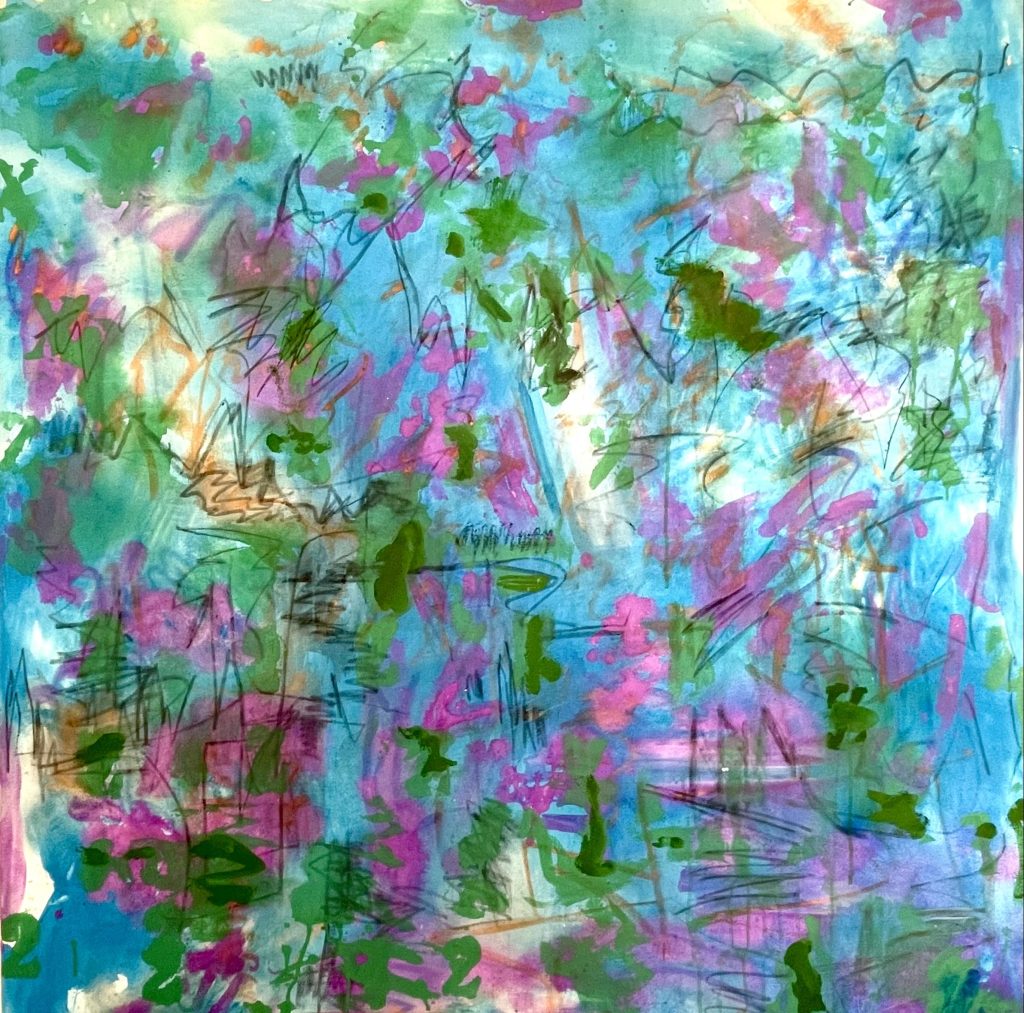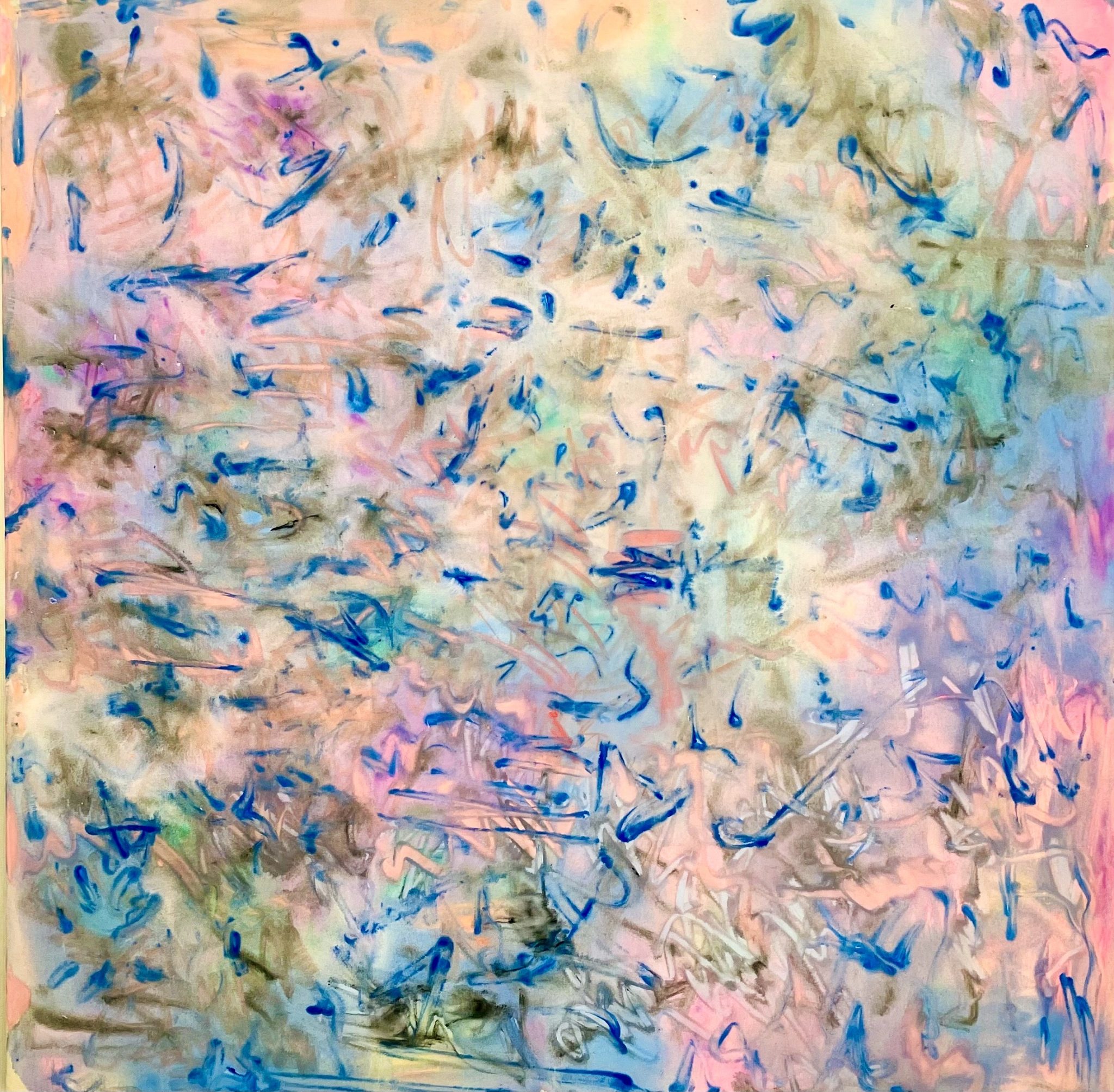


At some point during 2021 a significant mental shift occurred in Bradford’s practice leading to a new body of work, later to be called The Nebulous Series. For a decade or more the emphasis had been on the manipulation of either his own paintings (Trash Art Series) or objects and colours manufactured by an outside party (The Toy Story Sculptures). Bradford explains,
‘I reached a point with my Trash Art Series where I had no more figurative paintings remaining that I was willing to recycle and/or collage onto.’
Such circumstantial incidences such as this irreplaceable loss of source materials are not at all trivial in the life of an artist! In this case, it meant that Bradford could no longer rely on a ready-made supply of content that the previous series had provided. A period of necessary deconstruction had come to an end, and led, as all ends do, to a new beginning. At this point a new holistic approach was required in which the artist would be, once again, solely responsible for the invention of fresh subject matter, this time from scratch. As such, the viewer too is able to jettison all accompanying conceptual baggage implied by destroying and reusing your very own work. While at the same time many tropes and intentions remain from the Trash.
In common with the Trash Art works, the Nebulous paintings are canvasses that, as the title suggests, offer little at first but the generic materials from which they are made. Cheap poster pinks and flashes of neon green fresh from the tube are rendered with quick, throw-away gestures. Areas of scumbled white and indistinct tones hold the no-man’s land between oases of pure hues; the pause between notes played on a penny whistle. Amongst this healthy non-conceptual field we are left to freely absorb a purposeful painty riot, a non-didactic fiesta of the matter-of-fact. Marks, colour and strokes express doubt in paintings’ privilege position whilst delivering a shot of the good stuff, relieved of its heavyweight duties. The contemporary paradox that defines abstract painting in the 2020’s is neatly arrived at in a body of work that accepts it’s limits whilst freeing itself from them.
It’s a case of paint and treatment carrying the full burden of meaning without the need to preach or to make exterior reference beyond its own sphere of activity. Therefore, far from being slapstick, or even slapdash, a quickness of hand does not equate to the temporary. Rather, Bradford’s work revels in the idea of instability and impermanence to keep it moving, to keep it fresh, fully cognisant that it has already lived a hundred lives, and will live a hundred more.
